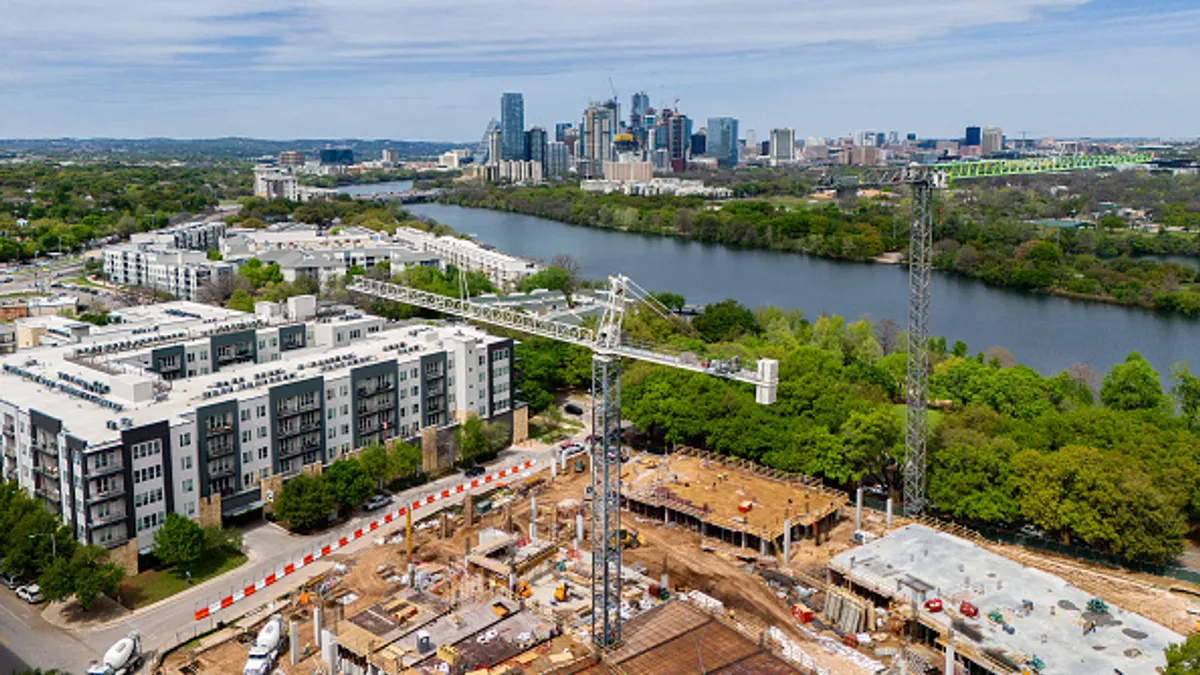Although offsite construction has long been used by developers across the globe, the delivery method is only now beginning to gain more popularity in U.S. markets — and for good reason. Budgets are tight, qualified workers are becoming increasingly difficult to find and the need to finish projects in a short time with such limited resources will only grow more critical to a firm’s success.
For those reasons, offsite construction and investment in the delivery method has been a key trend throughout this year. It’s likely that prefabrication will only become more widely accepted as construction companies grapple with the need to retool the ways in which they’ve always done business.
Although many in the industry have been resistant to change, others are seeing an opportunity in the burgeoning method. More general contractors are partnering with prefab companies while investors, too, are putting their money where their confidence in the market is.
According to a 2014 report from the National Institute of Building Sciences, 93% of those surveyed in the AEC industries said they had used offsite methods in the past year. The method’s cost effectiveness and its ability to shorten project schedules, they said, were the main benefits. And it is those advantages that likely will drive more major industry players to look beyond the job site for solutions to construction’s productivity problem.
During the Offsite Construction Expo in Philadelphia last week, leaders in the field shared their thoughts about where they see the future of the delivery method.
1. Tech companies will help drive the push for offsite
When the Modular Building Institute met at a board gathering in May, council members posed the question, "What would happen if someone could go online and order a building from Amazon and have it delivered to a site?" according to Tom Hardiman, executive director of the organization.
While the thought seemed like it was at least three to five years ahead of its time, that notion is now a reality. "With companies like Google, Marriott, Starbucks and other high-tech firms like Autodesk embracing offsite, there is a ton of investment money looking to revolutionize the construction industry," Hardiman said. "It's going to change so fast in the next year."
But with those tech investments will likely come higher expectations for how those prefabricated developments are built.
"The industry will evolve or gravitate more toward this offsite solution," Hardiman said. "The challenge is that our buildings are still pretty complex. It's an entrenched construction industry and the people who understand our building codes and can embrace modular construction are the ones who are going to do well."
2. Developers and contractors will become more involved
Even as little as five years ago, most projects were either site-built or modular. Today, developers are focusing on modular, likely in response to pressures from limited resources and the need to increase productivity under tighter constraints.
And with large companies like Whiting-Turner, Turner Construction and Gilbane now having project managers for offsite, it’s only a matter of time before the delivery method gains more traction, according to FullStack Modular CEO Roger Krulak.
3. Watch Marriott’s next moves
One big driver behind offsite’s move to the mainstream is Marriott International’s involvement in the market segment. With six offsite manufacturers building for Marriott today, the company aims to add seven more firms by next year, according to Karim Khalifa, Marriott’s senior vice president of global design strategies. That move would set Marriott up to surpass its goal of using modular on 13% of its new North American hotel projects in 2017.
The company has previously cited the desire to decrease building costs and ease the challenges associated with finding qualified workers. Now, Marriott says it expects to conduct stacking educational events twice a year to educate more owners and general contractors in the industry about offsite construction and the method’s perceived benefits — and representatives from Hilton and Wyndham Hotels and Resorts were there to take notes. The company, too, is working to develop a metric of goals for offsite projects’ defects, schedules and U.S.-based costs to provide a working outline with which to compare their site-built counterparts.
4. Suppliers are getting into the offsite game
With offsite construction’s relatively small share of the U.S. construction market, many suppliers have not, until recently, been equipped with market lines developed specifically for the segment.
Now, according to Krulak, suppliers have started to create product lines with offsite in mind. "Manufacturing for modular solutions means that the industry as a whole is moving in that direction, and we've never seen that before," he said.
One of those suppliers, Tremco, has a modular OEM product line. "We've worked with Tremco for forever, but they didn't have a modular product before," Krulak said. "We had to work with their engineers to find solutions. Now they have this OEM product — that's going to result in huge time savings for modular construction.”
5. Foreign investors are laying claim in U.S. markets
While the U.S. has been slow to catch on to offsite construction, other global powerhouses have capitalized on the delivery method, both at home and abroad.
"There are a lot of foreign manufacturers that want to get into the U.S. market and I think they'll come," Hardiman said. One of those contenders is Poland-based Polcom Modular, an offsite manufacturer that has contracted with Marriott and Rinaldi Group to build and ship prefabricated hotel pods to the U.S.
But Poland isn't the only country getting involved in U.S. markets. Chinese and Japanese firms are also snapping up U.S. construction companies.
"If the U.S. modular manufacturers don't step it up, the European, Japanese and Chinese modular manufacturers will," Hardiman said. "To pretend that there's not going to be a global influence on our construction industry is completely naive. I think we're in for a major construction revolution, and I think it's maybe a year or two."





















